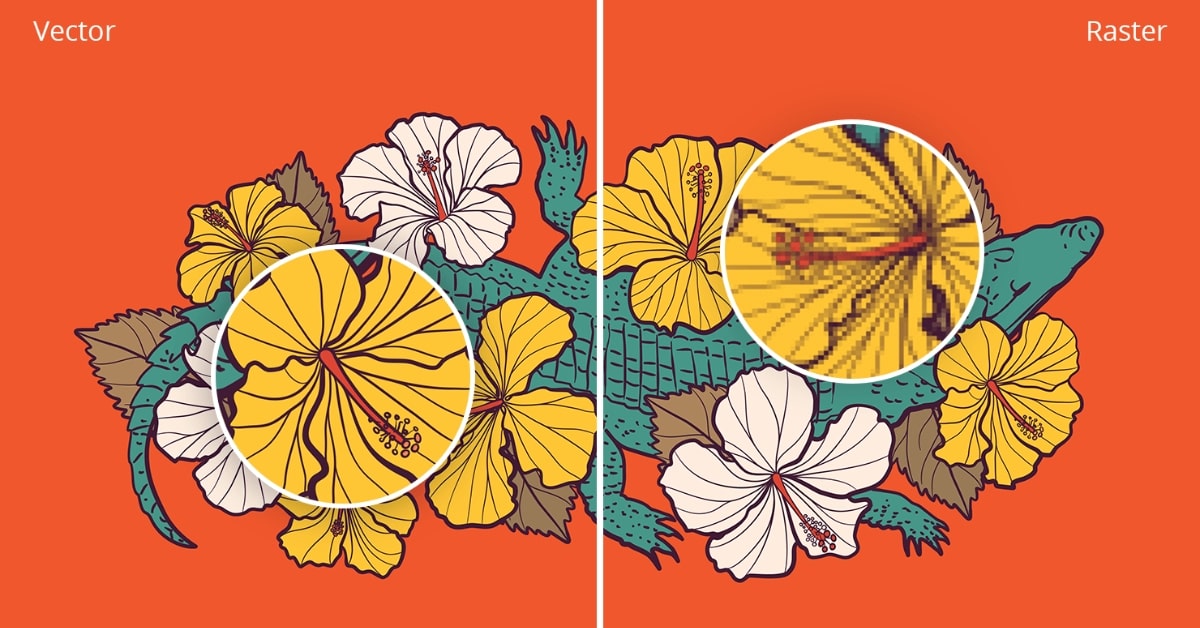In the dynamic landscape of digital design and photo editing, the transition from raster to vector has emerged as a game-changer, revolutionizing the way graphics are created and utilized. The concept of raster to vector design holds immense significance for designers, illustrators, and businesses seeking versatile and scalable visual assets. This article aims to unravel the essence of raster to vector design, exploring its intricacies, benefits, and applications in the realm of creative endeavors.
Understanding Raster to Vector Design
Raster images are composed of pixels, whereas vector images utilize mathematical equations to define shapes and lines. Raster to vector design involves the transformation of pixel-based images into scalable and editable vector formats, preserving the integrity and enhancing the adaptability of the visuals.
Significance of Raster to Vector Design
- Scalability and Resolution Independence: Vector designs maintain clarity and sharpness regardless of size alterations, making them suitable for diverse applications without compromising quality.
- Editability and Flexibility: Vector graphics allow for easy manipulation of individual elements, enabling designers to modify colors, shapes, and sizes seamlessly.
- Print and Web Compatibility: Vector designs are ideal for both print and web applications, ensuring consistent quality across different mediums.
- File Size Efficiency: Vector files are often smaller in size compared to their raster counterparts, enabling faster loading times and efficient storage.
Applications of Raster to Vector Design
- Logo and Branding: Businesses benefit from vectorized logos that remain crisp and scalable for various marketing materials.
- Illustrations and Artwork: Artists use raster to vector design to transform hand-drawn illustrations into versatile digital formats.
- Technical Drawings: Engineering and architectural designs can be efficiently converted into vectors for precision and scalability.
- Text-Based Graphics: Converting text-based images ensures clear and sharp text at any size, beneficial for signage and scanned documents.
Best Practices for Raster to Vector Design
- Choose the Right Software: Utilize graphic design software like Adobe Illustrator, CorelDRAW, or Inkscape known for their raster to vector conversion capabilities.
- Adjust Conversion Settings: Fine-tune threshold and smoothing settings to achieve the desired level of detail while minimizing noise in the vector output.
- Inspect and Refine: After conversion, thoroughly review the vector design for accuracy and make manual refinements if necessary.
- Save in Multiple Formats: Save the vectorized designs in various formats (SVG, AI, EPS) for compatibility across different software and platforms.
Conclusion
Raster to vector design stands as a pivotal process in the realm of digital creativity, offering designers and artists a powerful tool to create scalable, versatile, and high-quality graphic design. By comprehending its significance, applications, and best practices outlined in this article, individuals can leverage the potential of raster to vector design to elevate their visual content and achieve professional and adaptable designs for various purposes.
FAQs
Can complex images with detailed textures be converted accurately into vector designs?
While raster to vector conversion is effective, intricate textures might require manual adjustments for optimal accuracy.
Are there limitations to the size of the raster image that can be converted into a vector design?
While software capabilities vary, large images may impact processing speed, so resizing larger images before conversion is recommended.
Does raster to vector design preserve the colors and gradients of the original image?
Yes, colors can be retained, and gradients can be recreated or modified in the vector design.
Are there free tools available for raster to vector design conversion?
Yes, some free online tools and software like Inkscape offer raster to vector conversion capabilities, although professional software may offer more advanced features.
This page was last edited on 27 February 2024, at 11:04 am
